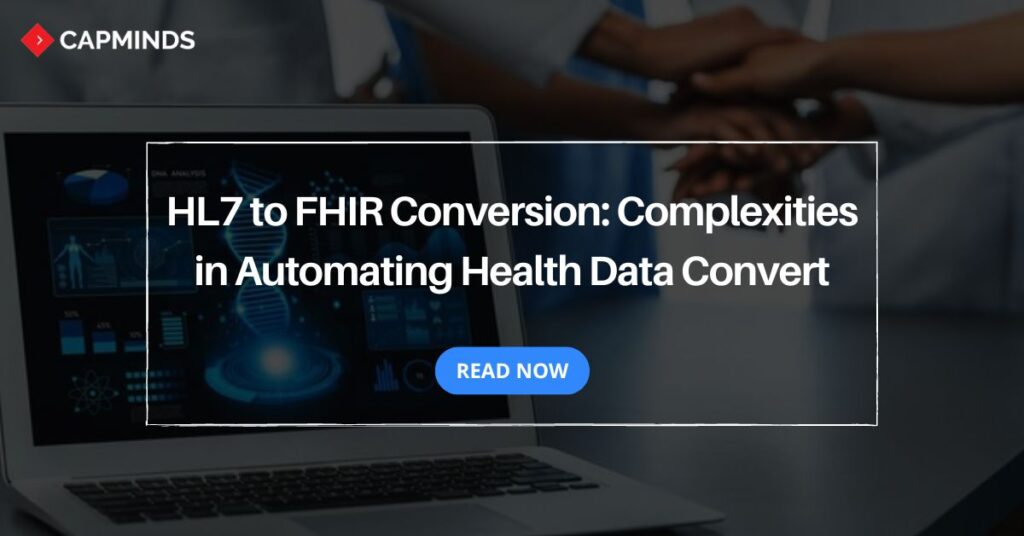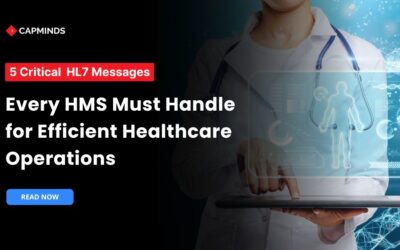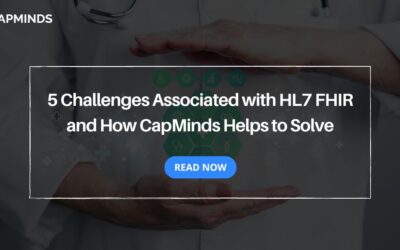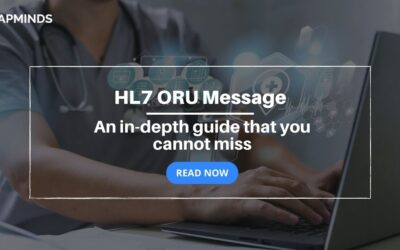HL7 to FHIR Conversion: Complexities in Automating Health Data Convert
Health data exchange is the basis of modern healthcare. As the healthcare industry embraces popular standards like FHIR, migrating legacy formats like HL7 becomes necessary.
But If you try to find the best resource or guide to “converting HL7 to FHIR”, you will encounter no results because there is no such thing as an HL7 to FHIR converter.
However several technician teams in the US handling healthcare company data have tried to automate the HL7 to FHIR data converting process.
Avoided the manual data mapping configuration process. During the process, they encountered various complexities which you are going to learn in this blog post.
What is HL7 FHIR?
FHIR stands for Fast Healthcare Interoperability Resource. It is a health interoperability standard developed by the HL7, which stands for Health Level Seven. It is specifically designed to enable health data exchange between healthcare systems within the organization.
FHIR is the most recent standard for sharing data and incorporates the expertise and knowledge of previous logical and theoretical models.
HL7 has been generating standards for healthcare data and modeling. Consequently, it offers an easier way to exchange data between healthcare apps without compromising its integrity.
Related: Unknown Core Capabilities of FHIR: A Beginner’s Guide
What is the Difference Between HL7 and FHIR Healthcare?
While both are data standards used for health interoperability, there are a few key differences in-between. The Key differences between HL7 and FHIR are:
- FHIR supports open web technologies such as XML, JSON, and RDF, whereas HL7 supports only XML.
- FHIR utilizes prior HL7 standards (CDA, V2, V3), but is easier to use and spans a wider range of technologies.
- FHIR is rich in choices for sharing data between systems using RESTful APIs, which replace point-to-point interfaces.
- FHIR enables smoother data flow and shorter onboarding time for new data partners.
- Previous HL7 standards are outdated and less adaptable than FHIR.
Benefits of HL7 FHIR for Health Information Exchange
1. Health Data Interoperability
- HL7 FHIR is a popular standard used for health interoperability.
- Using HL7 FHIR, you can seamlessly share patient health information with other healthcare systems and providers.
- This way, patients will receive coordinative care from multiple healthcare professionals, ensuring health history is flowing securely between them.
2. Workflow Optimization
- HL7 FHIR makes it easier for a smoother workflow while maintaining efficiency.
- It optimizes the exchange of information between the EHR system and other organizations like pharmacies and labs.
- This saves time and improves patient care by enabling faster access to test findings and more effective prescription management.
3. Third-Party Integration
- FHIR uses a standardized API and modular design making it easier for developers to create applications that work with various healthcare systems.
- HL7 FHIR allows you to seamlessly connect with third-party apps and devices and eliminates complex data conversion.
- Integration with third-party tools like wearables, health apps, and clinical decision tools can enhance the functionality of exciting healthcare systems.
4. Patient-Centric Care
- FHIR allows them to access and manage their patient information a lot easier.
- HL7 FHIR makes it easy for better care coordination by enabling complete patient information from across different providers.
Related: HL7 FHIR & EHR Data Transmission: 9 Easy Steps to Implement
5 Complexities in Automating HL7 to FHIR Data Convert
1. Inconsistent Data Placement
- Hospitals may place crucial data elements in unexpected segments
- This hinders automated mapping to FHIR’s structured resources.
2. Unrecognized Segments
- Custom segments, unique to each hospital, can be present in the HL7 data
- Posing a challenge for out-of-the-box HL7 to FHIR Data Converters.
3. Non-Standard Messages
- Deviations from the HL7 standard in message formatting further complicate the conversion process for automated tools.
4. Ambiguous Z Segments
- The Z segments, intended for custom use, often contained unstructured data that could not be automatically mapped to FHIR
5. Invented Segments
- Hospitals might even create entirely new segments
- Leaving automated converters completely lost during the translation.
CapMinds HL7 FHIR Data Migration Service
CapMinds offers the best health interoperability solution for healthcare practices.
Our HL7 FHIR service will have a clear understanding of your clinical needs and requirements to cater to our solution.
We have years of experience in this field faced many challenges and tackled them with ease. Why can CapMinds be your Go-to Interoperability Solution?
- We are experienced professionals with years of experience in the field.
- Our technical team is an expert who will analyze your healthcare practice thoroughly to tailor the Interoperability solution.
- We prioritize safety, security, encryption, and authentication to protect your healthcare practice patient’s data.
- Our comprehensive solution ensures seamless interoperability adhering to industry standards, and using standard protocols.
- We offer comprehensive training sessions to healthcare staff.
- Our affordable health interoperability solution benefits healthcare practice at all levels.
If you want to seamlessly integrate healthcare systems, we can assist you by navigating all potential challenges and ensuring seamless health data exchange.
Reach out to CapMinds Health Data Exchange Solutions for your Healthcare Practice.



